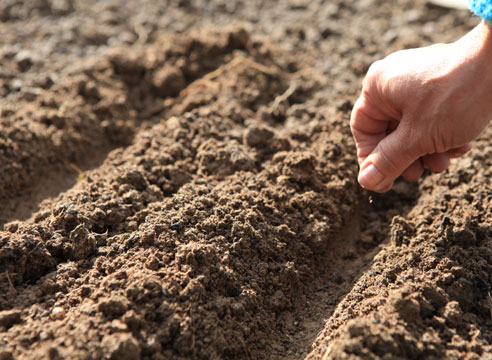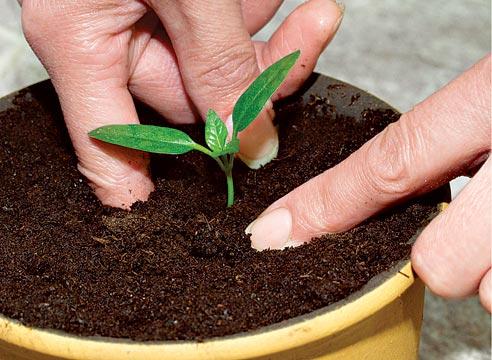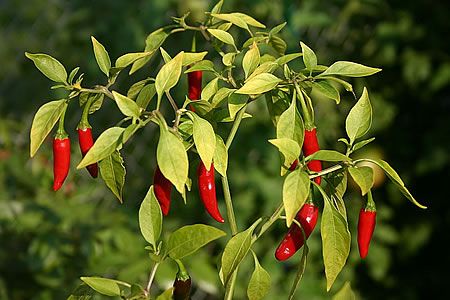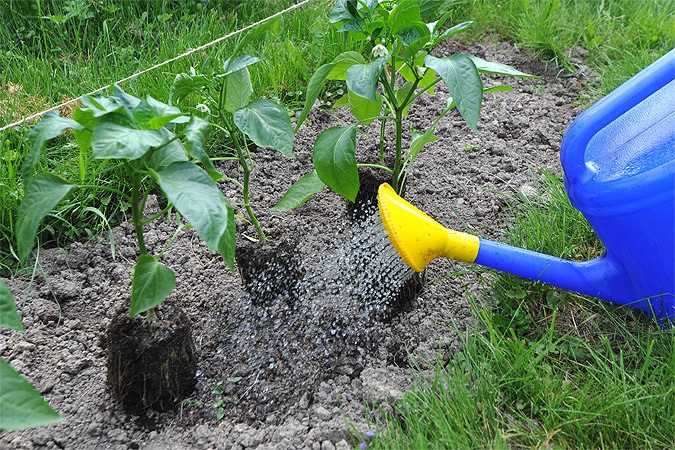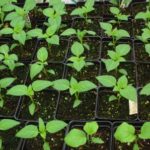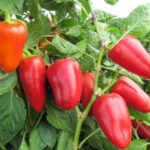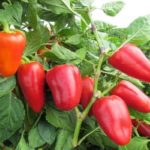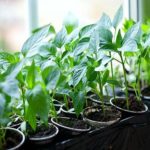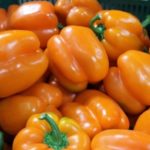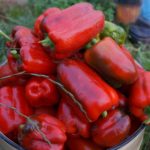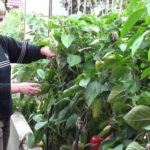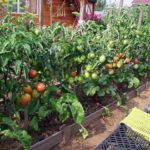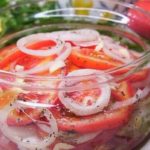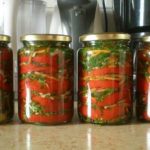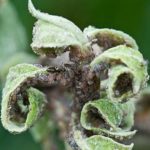Pepper Ogonyok attracts the attention of many gardeners with its taste and bright fruits. It is used not only for preparing various dishes, but also for treating colds. This variety is also an excellent decorative element with which you can decorate any kitchen. To get a high-quality harvest, you need to familiarize yourself with the features of growing red pepper at home.
Description
The characteristics of this variety allow us to study its features in more detail.
Ogonyok pepper grows in the form of a small bush, the height of which does not exceed 35-40 cm. During the season, about 80-100 peppers can be collected from one bush. The length of the fruit is not very large and reaches only 5-7 cm. The weight of one red pepper is about 35 g. The fruits differ not only in weight and size, but also in shape. They can be oval, round or have pointed tips.
This variety is a mid-early variety, as the first fruits begin to appear 120-125 days after planting. The plant can be grown in greenhouses, open ground or on a windowsill.
Planting seedlings
Growing seedlings from seeds consists of several main stages.
Selecting a location
First you need to choose a suitable room where the pots with the plant will be placed. Growing light peppers on a windowsill is carried out in the most illuminated and coolest place. It is not recommended to grow indoor peppers on windows exposed to direct sunlight. If the temperature on the windowsill is above 15 degrees, the leaves of the plant will begin to turn yellow and fall off. In this case, it is better to move the pots with it to the south-eastern or south-western part of the house.
Soil preparation
It is necessary to add sand, garden soil and humus to the soil in a ratio of 2:1:1. It is also worth taking care of the drainage system.
To do this, the bottom of the pot is sprinkled with crushed stone, broken brick or expanded clay. In order not to waste time preparing the soil, you can use a purchased soil mixture.
Seed preparation
Before planting, the seeds must be dipped in a 1% solution of potassium permanganate for half an hour.Then they should be covered with wet gauze and waited until they begin to peck. After this, the seeds can be distributed among the planting pots.
Planting
Planting the seed must be done very carefully so as not to accidentally damage the sprouts. You shouldn't plant it too deep. It will be enough to lower the seeds 10-15 mm deep. After this, the containers with the bushes are covered with film until the first shoots appear.
Picking
Picking is carried out at the stage of development of several pairs of true leaves. New seedlings should be planted in shallow containers with a diameter of about 7-8 cm. If you plant them in deeper pots, then by the time the pepper is planted in open ground, its above-ground part will be less developed than the root system. Before picking, the soil must be thoroughly watered.
The procedure must be performed very carefully so as not to damage the roots of the plant.
Seedling care
Care consists of regular feeding and watering of the soil. To water hot peppers, you should use settled warm water. It is not poured onto the soil itself, but into the tray of the pot. If the liquid is absorbed too quickly, then the planted plant needs to be watered again.
Seedlings need to be fed with special mineral fertilizers, which are used when growing domestic plants. This must be done immediately after watering so that the soil is sufficiently moist.
Planting in open ground
Peppers are planted in open ground after the first buds appear on the bushes.
This is done in the spring, when the average daily temperature does not drop below 15 degrees.
Preparing seedlings
A few weeks before planting, hot peppers must be hardened.To do this, pots with seedlings need to be regularly taken outside. At first, their time in the open air should not exceed 20-30 minutes per day. It gradually increases until the seedlings can stay outside all day. After the pepper grown in the pot gets used to the environmental conditions, it can be planted in open ground.
Site selection and soil preparation
Hot pepper loves heat and light, so it is grown in a well-lit area with heated soil. Before planting, the soil is dug up and fertilized with humus and peat. Waterproof and light soil must be fertilized with overripe manure in the fall.
Planting
During planting, you can use the nesting method with a 50x50 pattern. To plant peppers, you need to make holes at a distance of at least 30-45 cm from each other. The space between the rows should be about 50-60 cm. The depth of the hole depends on the length of the plant's root system. The seedlings should go into the ground up to the root collar.
Before planting seedlings, you need to add a tablespoon of mineral fertilizer to each hole. After this, the seedlings are carefully removed from the pots and placed in the ground.
All beds must be mulched with a small layer of peat. If the pepper bushes are quite tall, they should be tied to supports.
Care
Peppers need to be carefully looked after in order for them to produce a good harvest.
Watering
The plant is in great need of moisture during fruiting and flowering. Therefore, it is impossible for the soil in the beds to be dry. In summer, peppers need to be watered every day.
If it is too hot outside, you will have to moisten the soil several times a day. For irrigation, it is better to use warm water that has stood in the sun.
Top dressing
Pepper cultivation cannot be carried out without feeding. It promotes the rapid formation of fruits and helps cope with many diseases. The soil is fertilized with products that contain nitrogen. To do this, you can use potassium nitrate: 50 g of the drug is mixed with 10 liters of water. You can also use mixtures containing phosphorus, nitrogen, potassium salt and superphosphate.
Treatment
Growing peppers should be accompanied by periodic treatments that will help protect them from various pests and diseases. Fungal diseases can be controlled using fungicidal drugs. Bordeaux mixture, Bayleton or Oksikhom are perfect for this. To get rid of pests, you can use acaricidal or insecticidal drugs: Karate, Akarin, Kleschevit.
Conclusion
Ogonyok pepper is a fairly unpretentious plant that anyone can grow. To grow it, you need to familiarize yourself in advance with all the features of its cultivation.

